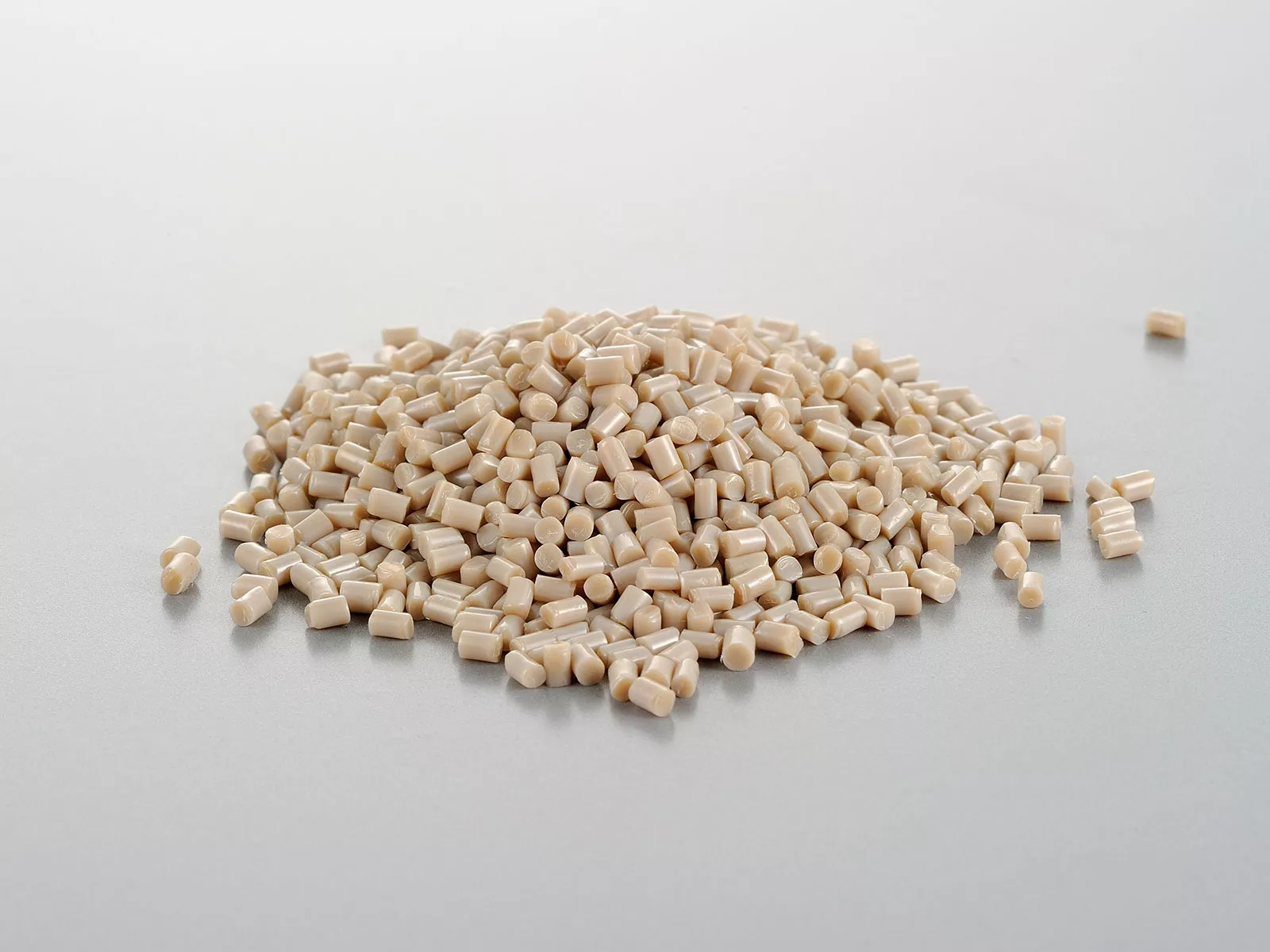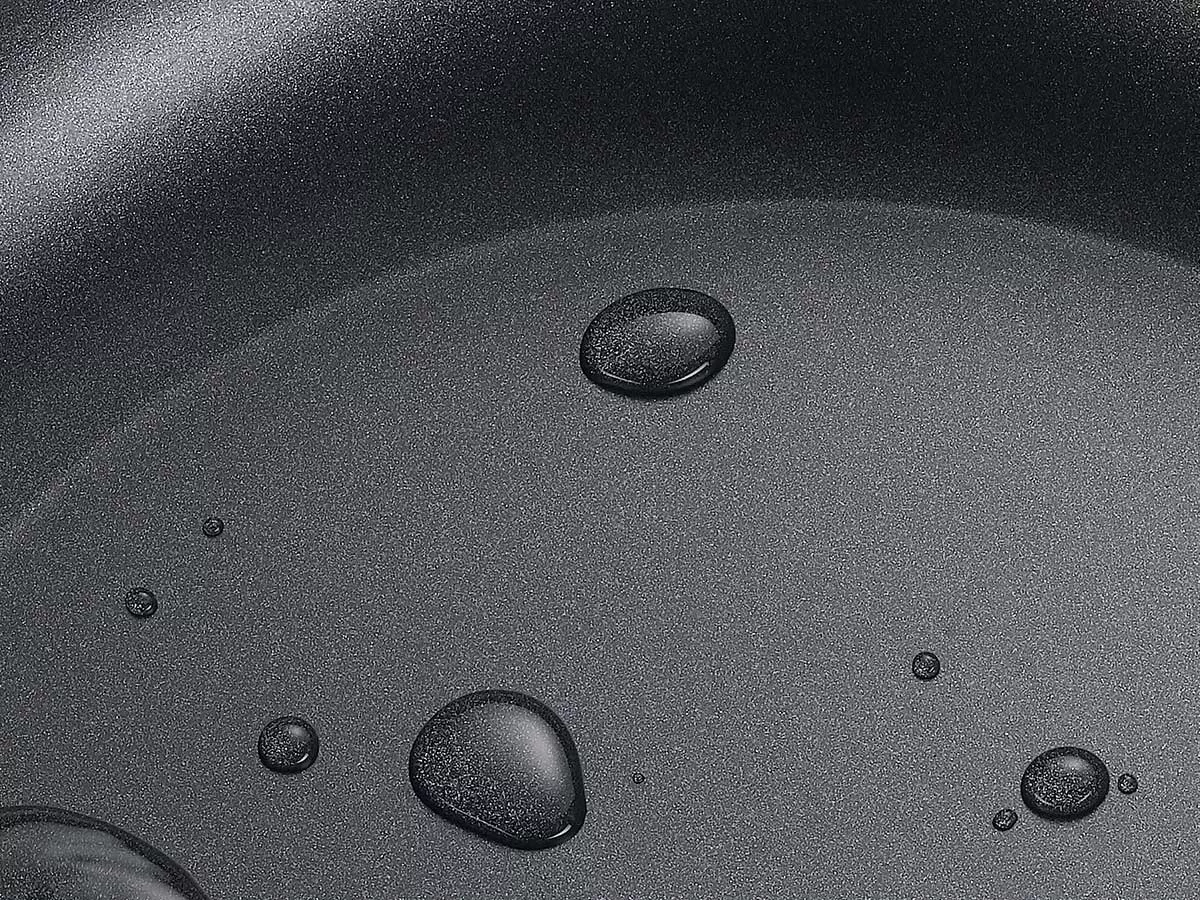1. Cast Iron Cookware
Cast iron cookware has been around for ages and for good reason. It’s the kind of kitchen tool that, with a bit of care, can last a lifetime. Let's dive into why cast iron is a staple in so many kitchens.
Pros of Cast Iron Cookware
- Durability: Cast iron is incredibly tough. Once you’ve got a well-seasoned pan, it’s almost indestructible.
- Versatile Cooking: You can use it on the stovetop, in the oven, or even over an open fire. Perfect for searing, sautéing, baking, and more.
- Natural Non-stick Surface: With proper seasoning, cast iron develops a non-stick surface that rivals any modern non-stick pan.
- Heat Retention: It holds onto heat like nothing else, providing even cooking.
- Chemical-free Cooking: Unlike some non-stick options, there are no chemicals leaching into your food.
Cons of Cast Iron Cookware
- Weight: These pans are heavy! Not ideal if you have difficulty lifting heavy items.
- Maintenance: Requires regular seasoning to maintain its non-stick surface and prevent rust.
- Cleaning: You can’t just toss it in the dishwasher; it needs special care.
If you’re looking for cookware that can do it all and last forever, cast iron is a fantastic choice. Just be prepared to give it a little TLC.
Tips for Using Cast Iron
- Season Regularly: Keep your pan in top shape by applying a thin layer of oil and baking it in the oven.
- Avoid Soap: Use hot water and a stiff brush instead. If you must use soap, re-season immediately.
- Dry Thoroughly: Always dry your pan completely to prevent rust.
Cast iron isn’t just a piece of cookware; it’s an investment in your kitchen’s future. With a bit of care, it’ll serve you well for years to come.
2. Nonstick Ceramic Cookware
Nonstick ceramic cookware is all about ease and style in the kitchen. It's the modern-day alternative to traditional nonstick pans, offering a sleek look and a functional cooking experience.
Pros
- Easy to Clean: Most ceramic cookware only needs a quick wipe or a gentle scrub with soapy water.
- Chemical-Free Cooking: Ceramic coatings are often free from harmful chemicals like PTFE and PFOA, making them a safer choice.
- Colorful Options: These pans come in a variety of colors, adding a pop of personality to your kitchen.
Cons
- Durability Concerns: Ceramic coatings can chip or wear out faster than other nonstick options, especially if not handled with care.
- Heat Sensitivity: They might not hold up well under high heat, which can impact their nonstick properties over time.
- Price vs. Lifespan: While generally affordable, their shorter lifespan might mean replacing them more often.
Ceramic cookware offers a blend of style and function, but it requires gentle handling to maintain its nonstick properties. For those who love a splash of color and a chemical-free cooking surface, it's a popular choice.
Ceramic cookware sets are a great option for those looking for affordable and easy-to-clean cookware. They fit perfectly into any kitchen and make cooking a breeze, as long as you remember to treat them kindly. For more insights into different types of nonstick pans, check out these simple methods to identify non-stick pans.
3. Enamel Nonstick Cookware
Overview
Enamel nonstick cookware combines the benefits of nonstick surfaces with the classic appeal of enamel. It's typically made by coating metal bases, like aluminum or steel, with a smooth, glass-like enamel finish. This gives the cookware a non-porous surface that's naturally nonstick and easy to clean.
Pros of Enamel Nonstick Cookware
- Durable and Affordable: Enamel cookware is known for its durability and cost-effectiveness. It's a great choice for those who want quality without breaking the bank.
- Lightweight and Heat Efficient: The enamel coating ensures quick and even heat distribution, making cooking faster and more efficient.
- Variety of Colors: Available in many colors, enamel cookware can add a splash of style to your kitchen.
- Safe for Oven Use: Good quality enamel cookware can be safely used in ovens up to 350 degrees F.
Cons of Enamel Nonstick Cookware
- Chipping Risk: The enamel coating can chip if not handled carefully, exposing the metal underneath, which might rust over time.
- Heat Retention Issues: While it heats quickly, enamel cookware can also cool down fast once removed from the heat source.
- Prone to Scorching: Foods can scorch easily if cooked on high heat, so it's best to use moderate temperatures.
Maintenance Tips
To extend the life of your enamel nonstick cookware, avoid using metal utensils that can scratch the surface. Instead, opt for silicone or wooden tools. Hand washing is recommended to preserve the enamel finish, and always ensure the cookware is fully dry before storing to prevent rust on any exposed metal.
Enamel nonstick cookware offers a blend of style and functionality, making it a favorite in many kitchens. However, like any cookware, it requires proper care to maintain its nonstick properties and aesthetic appeal.
For those looking for a modern, safer cooking alternative, consider exploring water-based oil non-stick coatings, which simplify cleanup and reduce the need for excess oil. Additionally, enamel-coated cast iron provides long-lasting non-stick benefits without harmful chemicals, making it an excellent choice for health-conscious cooks.
4. Glass Cookware
Glass cookware is a unique option in the kitchen, offering both visual appeal and practical uses. One of its standout features is the ability to see food as it cooks, which can be quite helpful in monitoring the progress without lifting the lid.
Pros of Glass Cookware
- Aesthetic Appeal: Glass cookware looks attractive and can double as serving dishes.
- Transparency: Allows you to watch the food cooking, reducing the need to open the lid and lose heat.
- Non-reactive Surface: Unlike some metals, glass doesn’t react with acidic foods, ensuring pure taste.
Cons of Glass Cookware
- Heat Distribution: Glass doesn’t distribute heat evenly, which can lead to hot spots and uneven cooking.
- Fragility: It can chip or break easily, leaving sharp edges or glass shards.
- Potential Lead Content: Older glass cookware might contain lead, posing health risks.
Glass cookware is a beautiful addition to any kitchen, but it requires careful handling to avoid damage and ensure even cooking. Frequent stirring might be necessary to prevent food from sticking or burning.
Overall, while glass cookware can be a stylish choice for serving and baking, it might not be the most practical for all cooking needs. For those interested in eco-friendly options, ceramic coated cookware offers a safe and durable alternative without the risk of toxic chemicals.
5. Stainless Steel Cookware
Stainless steel cookware is a favorite among both professional and home cooks for its durability and sleek appearance. It's a versatile option that can handle a variety of cooking tasks, from searing meats to simmering sauces.
Pros of Stainless Steel Cookware
- Durability: Stainless steel is known for its long-lasting nature, often lasting decades with proper care.
- Non-reactive Surface: This means it won't interact with acidic foods, keeping your dishes pure in taste.
- Heat Distribution: High-quality stainless steel cookware often includes an aluminum or copper core, which helps in even heat distribution.
- Easy Maintenance: Most stainless steel cookware is dishwasher safe, making cleanup a breeze.
Cons of Stainless Steel Cookware
- Sticking Issues: Food can stick to stainless steel pans if not used properly, often requiring the use of oil or butter.
- Weight: Some stainless steel pots and pans can be quite heavy, especially those with multiple layers.
- Cost: High-quality stainless steel cookware can be expensive, but it's often a worthwhile investment for serious cooks.
Tips for Using Stainless Steel Cookware
- Preheat Properly: Always preheat your pan before adding oil or food to prevent sticking.
- Use the Right Utensils: Avoid metal utensils that can scratch the surface; opt for wood or silicone instead.
- Cleaning: For stubborn stains, a paste of baking soda and water can help remove residue without scratching the surface.
Stainless steel cookware is a reliable choice for those who appreciate precision in their cooking. Its ability to withstand high temperatures and its non-reactive nature make it perfect for a variety of culinary tasks. While it may require a bit of a learning curve to avoid sticking, the results are well worth it. Investing in a good set can elevate your cooking experience to new heights.
For an in-depth comparison of cookware, including stainless steel options, check out the evaluations from a dedicated test kitchen that reviewed 131 sets over the past two years. This resource can guide you to the best choices for your needs.
6. Copper Cookware
Copper cookware is a favorite among professional chefs and home cooks who appreciate its excellent heat conductivity. Copper heats up quickly and distributes heat evenly, making it ideal for precise cooking. However, it's not without its quirks.
Pros of Copper Cookware
- Superior Heat Conductivity: Copper is renowned for its ability to heat up quickly and evenly, allowing for precise temperature control.
- Aesthetic Appeal: Its shiny, polished look adds a professional touch to any kitchen.
Cons of Copper Cookware
- Reactivity: Copper can react with acidic or alkaline foods, sometimes giving them a metallic taste. This is why most copper cookware is lined with tin or stainless steel.
- Maintenance: Copper requires regular polishing to maintain its luster and may need re-tinning over time.
- Cost: High-quality copper cookware can be quite expensive.
Care Tips
- Cleaning: Always hand wash your copper pots and pans with a gentle detergent and dry them immediately to avoid water spots.
- Polishing: Use a special copper polish to keep your cookware looking its best.
Copper cookware offers excellent performance for those willing to invest in its upkeep. It's a standout choice for cooks who demand precision and are prepared to maintain its beautiful appearance.
For those serious about cooking, investing in copper cookware can be a game-changer, thanks to its unparalleled heat distribution capabilities.
7. Aluminum Cookware
Aluminum cookware is a staple in many kitchens due to its affordability and excellent heat conduction. Let's break down the pros and cons of using aluminum cookware in your culinary adventures.
Pros of Aluminum Cookware
- Excellent Heat Conduction: Aluminum is known for its ability to heat up quickly and distribute heat evenly. This makes it ideal for cooking foods that require precise temperature control.
- Resistant to Rust and Corrosion: Unlike some metals, aluminum does not rust, extending the lifespan of your cookware.
- Lightweight and Inexpensive: It's easy to handle and doesn't break the bank, making it a popular choice for many home cooks.
Cons of Aluminum Cookware
- Reactivity with Food: Aluminum can react with acidic foods, which might lead to a metallic taste in your dishes. Some people also have concerns about aluminum toxicity and its potential health effects.
- Soft Metal: The material is prone to scratches and dents, which can affect its longevity and performance.
- Discoloration and Durability Issues: Over time, aluminum cookware may discolor and wear out faster compared to other materials.
Aluminum cookware is perfect for those who want a cost-effective solution with great heat conduction. However, if you're cooking with acidic ingredients often, you might want to consider alternatives or anodized versions to minimize reactivity.
8. The Rock Cookware
The Rock Cookware stands out in the kitchen with its unique speckled black finish and ultra-hard surface, making it a popular choice for many home cooks. This cookware is known for its exceptional durability and nonstick performance, which is three times better than traditional nonstick pans. It's built with a thick, forged aluminum base that ensures even heat distribution, so your meals cook evenly every time.
Key Features
- Durability: The rock-like surface is incredibly tough and can withstand daily use without showing signs of wear.
- Nonstick Performance: Food releases effortlessly, which means less time scrubbing pots and pans.
- Heat Distribution: The thick aluminum base provides consistent heat, reducing the chances of hot spots.
- Maintenance: It's dishwasher safe, but to maintain its appearance, hand washing is recommended.
- Safety: The cookware can be used in the oven up to 392°F (200°C).
Pros and Cons
Pros:
- Lightweight design makes handling easy.
- Tempered glass lids help lock in moisture and flavor.
- Stainless steel handles provide a secure grip.
Cons:
- Avoid using metal utensils to prevent scratching.
- Not suitable for high heat; use on low to medium settings.
- Requires a small amount of oil to enhance nonstick performance.
If you're looking for a cookware set that combines durability with excellent nonstick capabilities, The Rock Cookware is worth considering. Its unique construction and design make it a reliable choice for everyday cooking.
Tips for Best Use
- Always use wooden or silicone utensils to prolong the life of the nonstick surface.
- Add salt to boiling water to prevent pitting on the cookware's surface.
- Lift the pan instead of sliding it on glass stovetops to avoid scratches.
For those who appreciate marble-coated cookware for its even heat distribution and lightweight design, The Rock Cookware offers a similar experience with a rugged yet stylish appearance. Whether you're a novice cook or a seasoned chef, this cookware can make your kitchen adventures more enjoyable.
9. Orgreenic Cookware
Orgreenic cookware has made a name for itself in the world of nonstick cookware. This line is known for its ceramic-based nonstick surface, which is considered more environmentally friendly than traditional nonstick coatings that are usually petroleum-based. What makes Orgreenic stand out is its commitment to eco-friendly cooking solutions, which aligns well with the increasing demand for sustainable kitchen products.
Key Features
- Nonstick Surface: The ceramic coating is designed to provide a nonstick experience, making cooking and cleaning easier. However, some users have noted that over time, the nonstick quality can diminish, requiring regular seasoning to maintain its effectiveness.
- Eco-Friendly: Orgreenic cookware is marketed as a greener option due to its ceramic coating, which is free from harmful chemicals like PFOA and PTFE.
- Versatility: This cookware is suitable for all stovetops, including induction, making it a versatile choice for various cooking needs.
Pros
- Health-Conscious Design: Free from harmful chemicals, making it a safer choice for health-conscious cooks.
- Even Heating: The cookware ensures even heat distribution, reducing the chances of hot spots and uneven cooking.
- Lightweight: Easier to handle as compared to heavier alternatives like cast iron.
Cons
- Durability Issues: The nonstick coating may wear off over time, especially if not maintained properly.
- Temperature Sensitivity: It is not advisable to use this cookware at very high temperatures as it can affect the nonstick surface.
- Care Requirements: To avoid scratching, it's best to use non-metal utensils and avoid abrasive cleaners.
Orgreenic cookware offers a balance of eco-friendliness and functionality, but it requires a bit of extra care to ensure longevity. This cookware is a great option for those looking to make more environmentally conscious choices in their kitchen without compromising on performance.
For those interested in exploring more about OrGREENiC's non-stick, scratch-resistant cookware, this 10-piece set is worth considering for its promise of effortless cooking and easy clean-up.
10. Fusiontec Cookware
Fusiontec cookware is making waves in the kitchen world. It's a neat blend of style and function, appealing to those who want both performance and aesthetics. Here's what you need to know about this innovative cookware line.
Fusiontec Construction: At its core, Fusiontec cookware features a steel base coated in ceramic. This combination offers a balance between durability and weight, making it lighter than traditional cast iron but still robust enough for everyday use.
Key Features
- Heat Tolerance: Fusiontec cookware can withstand temperatures up to 500°F, making it versatile for various cooking methods, including oven and broiler use.
- Compatibility: Whether you're cooking on gas, electric, or induction ranges, Fusiontec has you covered. It's designed to work seamlessly across different heat sources.
- Color Choices: Available in three stunning finishes, including rose quartz and onyx, these pieces add a pop of color to any kitchen.
Advantages
- Nonstick Surface: The ceramic coating not only makes it visually appealing but also ensures an easy-to-clean surface, reducing the hassle of stuck-on food.
- Lightweight Design: Unlike its heavier counterparts, Fusiontec is easier to handle, making it a favorite for those who prefer lighter cookware.
- Even Heating: While the steel core isn't as responsive as copper, it heats evenly, which is crucial for consistent cooking results.
Considerations
- Heat Responsiveness: Fusiontec might not heat as quickly as some other materials like aluminum, but it maintains a steady temperature, which is great for slow and even cooking.
- Price Point: Positioned as a premium product, it might be on the pricier side, but many find the investment worthwhile for its durability and design.
Fusiontec cookware is for anyone who loves the look of ceramic but wants the practicality of nonstick. It's the perfect blend of beauty and functionality, ideal for those who appreciate both form and function in their kitchen tools.
If you're considering upgrading your cookware, Fusiontec offers a compelling case with its modern design and reliable performance. For those who value aesthetics and functionality, it's a choice worth exploring.
Wrapping It Up: Ceramic vs Enamel Cookware
Alright, so we've gone through the nitty-gritty of ceramic and enamel cookware. Both have their ups and downs, no doubt about it. Ceramic is great for those who love a pop of color and easy cleaning, but it might not last as long as you'd hope. Enamel, on the other hand, offers durability and a classic look, though it can chip and might not hold heat as well. At the end of the day, it really boils down to what you value more in your kitchen. Whether it's the aesthetic appeal or the longevity, there's no one-size-fits-all answer. So, take a good look at your cooking habits and kitchen style, and choose what feels right for you. Happy cooking!









